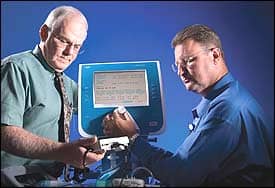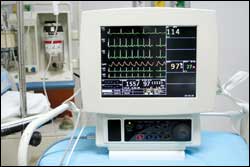Satisfy your customers and your employer by following the AC-ARC formula.
AC-ARC—no, it has nothing to do with AC voltage arcing, but it does explain what it takes to be a successful employee within a service organization.
- Attitude
- Communication
- Appearance
- Reliability
- Competence
As any owner of a long-lasting independent service organization can tell you, good employees will make or break a service company or service department within a hospital. Employers who do not seek and retain employees with key positive attributes soon see their companies or departments sink. Employees who make no effort to follow the AC-ARC model or one like it may wind up at home searching the want ads. Some of the following points may seem obvious, but they’re worth repeating, so take note.

Service personnel are in the business to solve problems, never to create or propagate them. A service person or engineer is called to the department or job site because something has failed in one way or other. Therefore, he or she will regularly have to deal with people who are frustrated, upset, and angry either with themselves, the equipment, or both. If service personnel are not prepared for these tense situations, they can find themselves becoming discouraged or, quite possibly, developing a negative attitude.
When equipment goes down, you’ll most often find that it has disrupted the entire department or facility. This can cause an extremely stressful environment, so it will take a very calm and always-pleasant demeanor on the part of the service engineer to help diffuse an otherwise explosive situation. When you approach the customer with a positive, can-do attitude, a calming demeanor, a smile, and a handshake, you will often end up with a great reputation and a lasting nickname like “lifesaver” or “miracle worker” instead of one of the monikers that some of your cohorts have earned over the years like “dufus” or “dead head.”
Communication
Being able to speak in an intelligent manner to others is certainly a plus, but being able to convey information in a way that customers will understand is something that some service workers have to stop and think about. Before presenting a lot of technical jargon that will sometimes confuse, or in some cases even belittle, the person you’re talking to, remember to keep it simple. In this way, if you get technical later, it will not appear as though you are insulting the customer’s intelligence.
If you find yourself having to spend a large amount of time on any type of repair, it is always a good idea to keep the customer/department head abreast of the situation. Tell the person what you have found, if anything, and what actions you might take to get the equipment back up and operational.
Remember, communication takes two. In other words, don’t underestimate the ability of the customer/department head to understand the technical workings of the device that you are servicing. Listen to what they have to say. You just may save you and the customer some time and money.
Appearance
Remember the old saying about only getting one chance to make a first impression? It’s especially true in the service business. Well-dressed, well-groomed service professionals portray themselves in a positive way. Because of the nature of our business, we come into contact with oil, grease, and dirt that can soil our clothes and/or the very item that we are working on. It helps to wear a smock or coveralls and carry paper towels to help keep yourself and the machine clean. Never leave a mess or a dirty-looking machine when you are finished with the repairs. This will help you build a good reputation in the eyes of the customer and the people who have to use the device when you leave.
Reliability
As a service person, your reputation hinges on your ability to do what you say you’re going to do when you say you are going to do it. In other words, there is no acceptable excuse for being late and making a customer wait. Your facility, boss, and your customer must be able to count on you and your ability to meet their expectations of any commitments that you have made to them in a timely manner.
Competence
All service personnel must be confident in their ability to fix or resolve a failure in whatever area of expertise that they claim. As a rule, it takes only one or two service calls to either gain or lose a customer’s confidence. Often, a competent service person will fix the current problem and detect and correct an ongoing intermittent problem, resulting in an augmented confidence level on behalf of the customer.
Remember, though, even a competent service person cannot be expected to resolve all the problems all the time. You might be surprised to learn how many customers will appreciate your honesty when you admit that you’re going to have to call for assistance. Most customers will simply note that you did whatever it took to get the job done.
The AC-ARC formula is not an all-inclusive list of the ingredients that make up a successful service person. There are always additional ways to improve yourself, your department, or the company you work for. For example, I always go to the equipment user/operator to find out what he or she thinks happened and then go to the department head/supervisor to get another point of view. Or, a few days after a repair, I’ll phone the facility and talk to the customer just to see how everything is going. If I happen to be in the neighborhood a few weeks later I’ll stop in and say hello, sort of as a courtesy call. It is sometimes the little things that convey your concern for your customers’ needs. When you combine those extra steps with AC-ARC, you can’t help but succeed!
Scottie R. DeWolfe, CE, BMET, is the sole proprietor of B-METS Corp, Dothan, Ala.



